Charpentier’s Compositional Talent
A French with the best from Italy
Charpentier’s substantial œuvre is distinguished by its remarkably high level of quality, and furthermore by a special beauty of a very humble and unpretentious kind that certainly could have made some of his contemporaries jealous.
When Sebastien de Brossard (1655–1730) commented in 1724 on Marc-Antoine Charpentier’s reputation:
The relationship to Italy that he maintained in his youth was the reason that led some French purists, or more precisely, those who were envious of the excellence of his music, to accuse him of having Italian tastes. After all, one can say that, without trying to flatter him, that he extracted the best out of it – his works are ample evidence thereof,
he outlined in a few pregnant words the key facts concerning Charpentier’s compositional art, especially with regard to its Italian roots. Indeed, Charpentier’s substantial œuvre is distinguished by its remarkably high level of quality, and furthermore by a special beauty of a very humble and unpretentious kind that certainly could have made some of his contemporaries jealous. What could have been easier than for those envious of him to object to the period of study in Italy by this son of a Parisian author, born in 1643, and the alleged Italian tastes that resulted thereof? Although many young composers from other European countries eagerly went to Italy to avidly and inquisitively study the new concertante style, the French maintained during the 17th century a noticeable distance to their Italian neighbours. It is therefore not surprising that Charpentier was not received with open arms in Paris after his three year stay in Rome. For the rest of his life he was not able to secure an official position at the king’s court, even though it is verified that Louis XIV greatly valued his music.
Marc-Antoine Charpentier
In nativitatem Domini canticum
- Full Score: Carus 21.001/00
- Vocal Score: Carus 21.001/03
- Set of Parts: 21.001/19
In Rome, Charpentier (1643–1704) had been a pupil of Giacomo Carissimi (1605–1674) who was for many years Kapellmeister of the Collegium Germanicum et Hungaricum, a Jesuit seminary. This period of study left a lifelong impression on him, but did not seduce him to blind epigonism. As Brossard stated, Charpentier’s works effectively and expressly attest that he only adopted the “excellence” of the Italian style – and this in a very individual and idiomatic manner – while maintaining a French accent through and through.
Even though Charpentier’s Roman apprenticeship did not provide him with any admission to France’s highest musical echelons, his closeness to the Jesuits that had begun in Rome did have positive effects on his career: back in Paris, he immediately entered the service of Mademoiselle de Guise, an aristocrat who maintained lively contact with the Jesuits and a small but choice private chapel. It was here that Charpentier was active as both singer and composer. He was also given the use of an appartment in his benefactress’ hôtel. In 1687 he was promoted to the position of maître de musique at the Jesuit Collège Louis-le-Grand and in 1698 he became maître de musique at the Sainte-Chapelle.
Marc-Antoine Charpentier
In circumcisione Domini
- Full Score: Carus 21.019/00
- Arrangement for choir & organ: Carus 21.019/03
One of the specific Italian characteristics that Charpentier adopted in Rome and subsequently made stylistically his own was the oratorio, a musical form that until then was almost unknown in France, but whose leading practitioner at the time was most certainly maestro Carissimi. In the oratorio biblical themes were set into dialogue, i. e., were presented by performers singing different roles. A biblical text served as the basis, but this was often slightly changed and supplemented with religious poetry. Recitatives and arias alternated with one another, an historicus, whose part could also be sung by several voices, acted as narrator. Furthermore, the roles of the persons encountered in the story could be sung either by the soloists or by the choir and the style of composition was concerted (i. e., not staged). Thirty-five such compositions by Charpentier, which are also known as histoires sacrées, have survived. Indeed, he was the only composer in 17th century France to make use of this form and he also had no immediate successor.
Four compositions for the Christmas cycle are amongst the earliest histoires sacrées that Charpentier apparently composed for a joint occassion in 1676/77. H 393 Canticum in nativitatem Domini was composed for Christmas Eve H 316 In circumcisione Domini for New Year’s Day, H 395 Pour la fête de l’Epiphanie and H 318 In festo purificationis for Candlemas. Although outwardly all four histoires are based on the same framework – they are all composed for three solo voices (two sopranos and a bass), two obligato instrumental voices and basso continuo – they demonstrate great variety in their individual construction. What they all have in common is a close relationship between the musical form and the details of the text.
Charpentier used the text of the first of these four works, albeit in slightly modified form, for another Christmas concerto (H 421) that he composed either in 1698 or 1699. The musical elements of this piece, in particular the conspicuously high tessitura of the three treble voices, suggest its purpose – it was apparently composed for the choir boys of Sainte-Chapelle.
Marc-Antoine Charpentier
In festo purificationis
- Full Score: Carus 21.020/00
- Arrangement for choir & organ: Carus 21.020/03
Marc-Antoine Charpentier
In nativitate Domini nostri Jesu Christi canticum
Carus 21.002
Marc-Antoine Charpentier
Magnificat
Carus 21.003
The Christmas concerto H 314 In nativitatem Domini canticum (Quem vidistis, pastores), composed about 1670, displays a close stylistic proximity to the histoires sacrées. Its text is based upon a Liturgy of the Hours antiphon that is expanded by the use of tropes to a contemplation of the Christmas History of Salvation, augmented by single verses from Psalm 97 (98).
The composition that he wrote for the solemn Vesper in the Jesuit church St.-Louis may be the Magnificat H 80, which was probably written about 1690. The work is through-composed for four vocal soloists, four-part choir and basso continuo, while the end of each of the verses is demarcated by a change of instrumentation or at least by the type of movement.
The program on the present CD has been supplemented by a series of delightful instrumental noels, i. e., Christmas songs, set for strings, flutes and basso continuo. These works have been passed down in two groups and were probably composed in the early 1690s.
Marc-Antoine Charpentier
Noël. Weihnachtskantaten
Carus 83.196


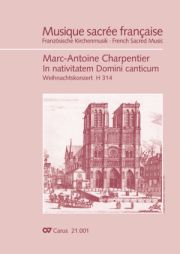
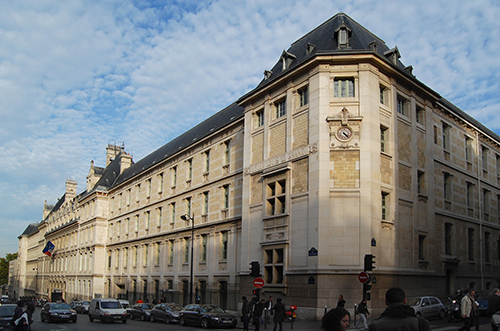

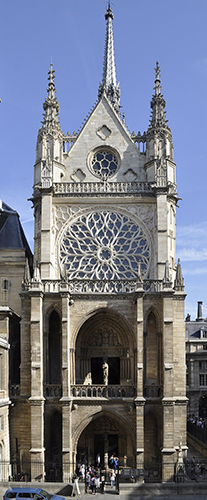
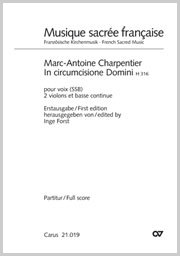
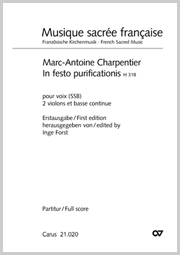
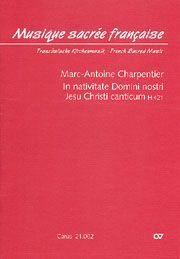
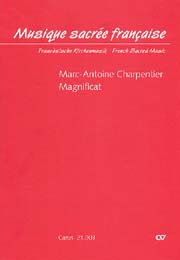
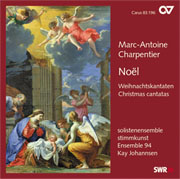


Leave a Reply
Want to join the discussion?Feel free to contribute!